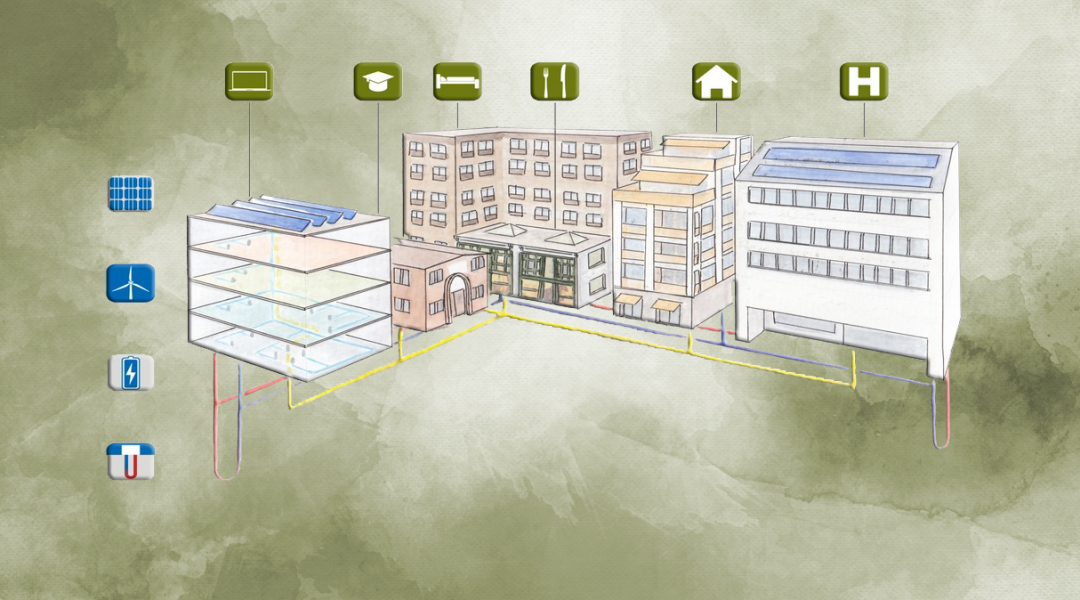The increasing share of decentralized intermittent renewable energy generation reinforces the necessity of balancing local production and energy consumption. Decentralized renewable energy systems are promising options to cope with this challenge. They are systems of interconnected buildings, which i) are powered by renewable energy sources (e.g., solar, wind), ii) combine multiple energy carriers (e.g., electricity, heat, hydrogen), and iii) integrate both storage (e.g., batteries, thermal tanks) and conversion (e.g., heat pump, electrolyzer) technologies. At the system level, they can range from single buildings, such as multi-family homes, to groups of buildings within neighborhoods, communities or city quarters.
Despite high up-front investment costs, these systems can provide numerous benefits: by increasing self-consumption of renewable electricity produced on-site, they can substantially reduce overall energy costs. They demonstrate large synergy potential and high operational flexibility, thereby improving input resource utilization, alleviating stress from the local grid, reducing transmission and distribution losses, and creating a more reliable energy supply.
Today, there are already several successful implementations of decentralized renewable energy systems across various applications and with diverse technical configurations; these range from interconnected neighborhoods in urban settings to autarkic systems in remote or islanded areas.
In WIREs Energy and Environment, David Grosspietsch, Marissa Saenger and Bastien Girod shed light on decentralized energy systems by providing an extensive review of the current state of literature and practice.
To do so, they analyse scientific publications and (pilot) projects based on four criteria: terminology, scope/motivation, application, and technical configuration. These criteria facilitate the understanding of decentralized energy systems needed to spur their development and diffusion.
The trend toward decentralized energy systems is likely to be enforced in the future due to widespread reductions in technology costs, further technological learning, and the coupling of different sectors – for instance, energy, mobility and industry.
Kindly contributed by David Grosspietsch, Marissa Saenger, Bastien Girod.

















